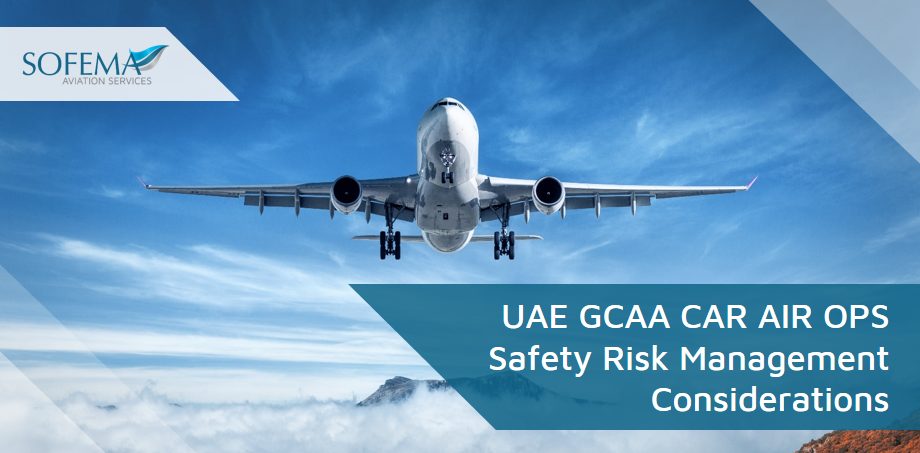Sofema Aviation Services considers the Operator Safety Management System Requirements driven by CAR AIR OPS
AMC1 ORO.GEN.200(a)(3) Management system – Complex Operators Safety Risk Management
Hazard identification processes
- Reactive and proactive schemes for hazard identification should be the formal means of collecting, recording, analyzing, acting on and generating feedback about hazards and the associated risks that affect the safety of the operational activities of the operator.
- All reporting systems, including confidential reporting schemes, should include an effective feedback process.
Risk assessment and mitigation processes
A formal risk management process should be developed and maintained that ensures analysis (in terms of likelihood and severity of occurrence), assessment (in terms of tolerability) and control (in terms of mitigation) of risks to an acceptable level.
- The levels of management who have the authority to make decisions regarding the tolerability of safety risks
Regarding the tolerability of safety risks should be specified.
Internal safety investigation
Note – The scope of internal safety investigations should extend beyond the scope of occurrences required to be reported to the competent authority.
Safety performance monitoring and measurement
Safety performance monitoring and measurement should be the process by which the safety performance of the operator is verified in comparison to the safety policy and objectives.
This process should include:
- Safety reporting, addressing also the status of compliance with the applicable requirements;
- Safety studies, that is, rather large analyses encompassing broad safety concerns;
- Safety reviews including trends reviews, which would be conducted during introduction and deployment of new technologies, change or implementation of procedures, or in situations of structural change in operations;
- Safety audits focusing on the integrity of the operator’s management system, and periodically assessing the status of safety risk controls; and
- Safety surveys, examining particular elements or procedures of a specific operation, such as problem areas or bottlenecks in daily operations, perceptions and opinions of operational personnel and areas of dissent or confusion.
The management of change
- The operator should manage safety risks related to a change.
- The management of change should be a documented process to identify external and internal change that may have an adverse effect on safety.
Note Regarding Management of Change – It should make use of the operator’s existing hazard identification, risk assessment, and mitigation processes.
Continuous improvement
- The operator should continuously seek to improve its safety performance. Continuous improvement should be achieved through:
o Proactive and reactive evaluations of facilities, equipment, documentation, and procedures through safety audits and surveys;
o Proactive evaluation of individuals’ performance to verify the fulfillment of their safety responsibilities; and
o Reactive evaluations in order to verify the effectiveness of the system for control and mitigation of risk.
The Emergency Response Plan (ERP)
An ERP should be established that provides the actions to be taken by the operator or specified individuals in an emergency. The ERP should reflect the size, nature, and complexity of the activities performed by the operator.
The ERP should ensure:
- An orderly and safe transition from normal to emergency operations;
- Safe continuation of operations or return to normal operations as soon as practicable; and
- Coordination with the emergency response plans of other organisations, where appropriate.
Next Steps
Follow this link to our Library to find & Download related documents for Free.
Sofema Aviation Services (www.sassofia.com) and Sofema Online (www.sofemaonline.com) provide EASA and GCAA Regulatory Compliant and Vocational Training Courses, for details please see the relevant website or email team@sassofia.com
Tags:
UAE GCAA, SAS blogs, Aviation Emergency Response Plan, Safety Performance Monitoring, CAR AIR OPS, Complex Operators Safety Risk Management, AMC1 ORO.GEN.200(a)(3) Management system, Internal safety investigation, Aviation Safety Risk Management





